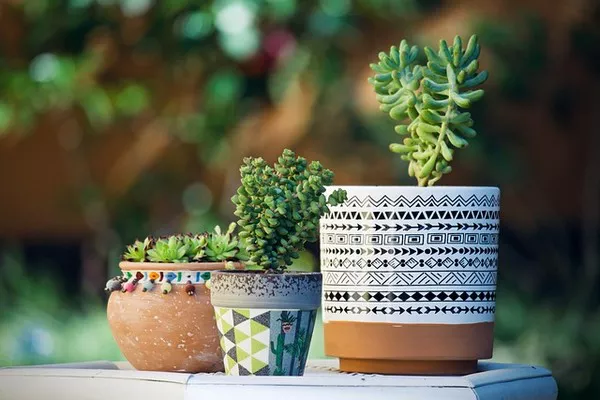Succulents have become increasingly popular in recent years due to their unique beauty and low-maintenance requirements. These hardy plants are known for their ability to store water in their fleshy leaves, making them well-suited for arid environments and busy lifestyles. However, even though succulents are relatively easy to care for, one common question that plagues many succulent enthusiasts is: “How often should I water my succulents?” The answer to this question is not as straightforward as it might seem, as various factors come into play when determining the watering schedule for these plants. In this article, we will delve into the intricacies of succulent care and provide you with a comprehensive guide on how often to water your succulents.
Understanding Succulents
Before we dive into the specifics of watering succulents, it’s essential to understand their unique characteristics and why they differ from typical houseplants. Succulents belong to a diverse plant family that includes a wide range of species, from Aloe and Echeveria to Sedum and Crassula. These plants are adapted to arid and semi-arid regions, where water is often scarce. As a result, they have developed several remarkable adaptations to store water for extended periods.
The most noticeable feature of succulents is their thick, fleshy leaves or stems. These specialized structures allow succulents to store water, reducing their dependence on frequent watering. Additionally, many succulents have a shallow root system that can efficiently absorb moisture from the soil when available.
Factors Affecting Succulent Watering Frequency
The key to successfully caring for your succulents lies in understanding the various factors that influence their watering needs. By taking these factors into account, you can create an optimal watering schedule that promotes healthy growth and prevents overwatering or underwatering.
1. Succulent Species:
Different succulent species have varying water requirements. Some, like Aloe and Haworthia, prefer slightly more moisture, while others, such as Echeveria and Lithops, thrive in drier conditions. Research the specific needs of your succulent species to determine its ideal watering frequency.
2. Season:
The time of year significantly impacts how often you should water your succulents. During the growing season (spring and summer), succulents typically require more frequent watering, while in the dormant season (fall and winter), they need less moisture.
3. Climate:
Your local climate plays a crucial role in determining the watering needs of your succulents. In areas with high humidity, succulents may require less frequent watering than in drier regions. The temperature also matters, as higher temperatures increase evaporation rates, potentially necessitating more frequent watering.
4. Container Type:
The type of container you use can affect how often you should water your succulents. Terra cotta pots, for example, are porous and allow soil to dry out faster than plastic or ceramic containers. Consider your choice of pot when establishing a watering routine.
5. Soil Mix:
Well-draining soil is essential for succulents. A fast-draining mix with ingredients like perlite, coarse sand, or pumice helps prevent root rot by allowing excess water to escape. Ensure your succulents are potted in the right soil mix to maintain a healthy moisture balance.
6. Sunlight:
The amount of sunlight your succulents receive can impact their water requirements. Succulents grown in bright, direct sunlight may need more frequent watering than those in indirect or filtered light.
7. Plant Age and Size:
Young succulents and small offsets typically require less water than mature, established plants. Adjust your watering frequency based on the age and size of your succulents.
Creating a Succulent Watering Schedule
Now that we’ve explored the factors influencing succulent watering needs, let’s discuss how to create a tailored watering schedule for your succulents.
1. Observe Your Succulents:
The most reliable way to determine when your succulents need water is through observation. Pay attention to the soil’s dryness and the appearance of your succulents. When the top inch or two of the soil feels dry, it’s usually time to water. Additionally, succulents will often show signs of thirst, such as wrinkled or shriveled leaves.
2. Use the “Soak and Dry” Method:
This is a popular watering technique for succulents. When it’s time to water, thoroughly soak the soil until water drains out of the pot’s bottom. Then, allow the soil to dry out completely before watering again. Avoid frequent, shallow watering, as this can lead to root rot.
3. Adjust for Seasonal Changes:
During the growing season, you may need to water more frequently, while in the dormant season, reduce the frequency to prevent overwatering. Always adjust your watering schedule based on the current season and environmental conditions.
4. Monitor Temperature and Humidity:
Hot, dry conditions may require more frequent watering, while cooler, humid conditions may necessitate less. Be prepared to adapt your watering routine accordingly.
5. Avoid Overwatering:
Overwatering is one of the most common mistakes when caring for succulents. Always err on the side of underwatering, as succulents are more tolerant of drought than excess moisture.
Conclusion
Successfully caring for succulents involves mastering the art of watering. While there is no one-size-fits-all answer to the question, “How often should I water my succulents?” understanding the factors that influence their watering needs allows you to create a tailored schedule for your specific succulent collection. By observing your plants, adjusting for seasonal changes, and prioritizing well-draining soil and containers, you can ensure that your succulents thrive and maintain their unique beauty with minimal effort. Remember that patience and attention to detail are key when it comes to nurturing these remarkable desert-dwelling plants.


